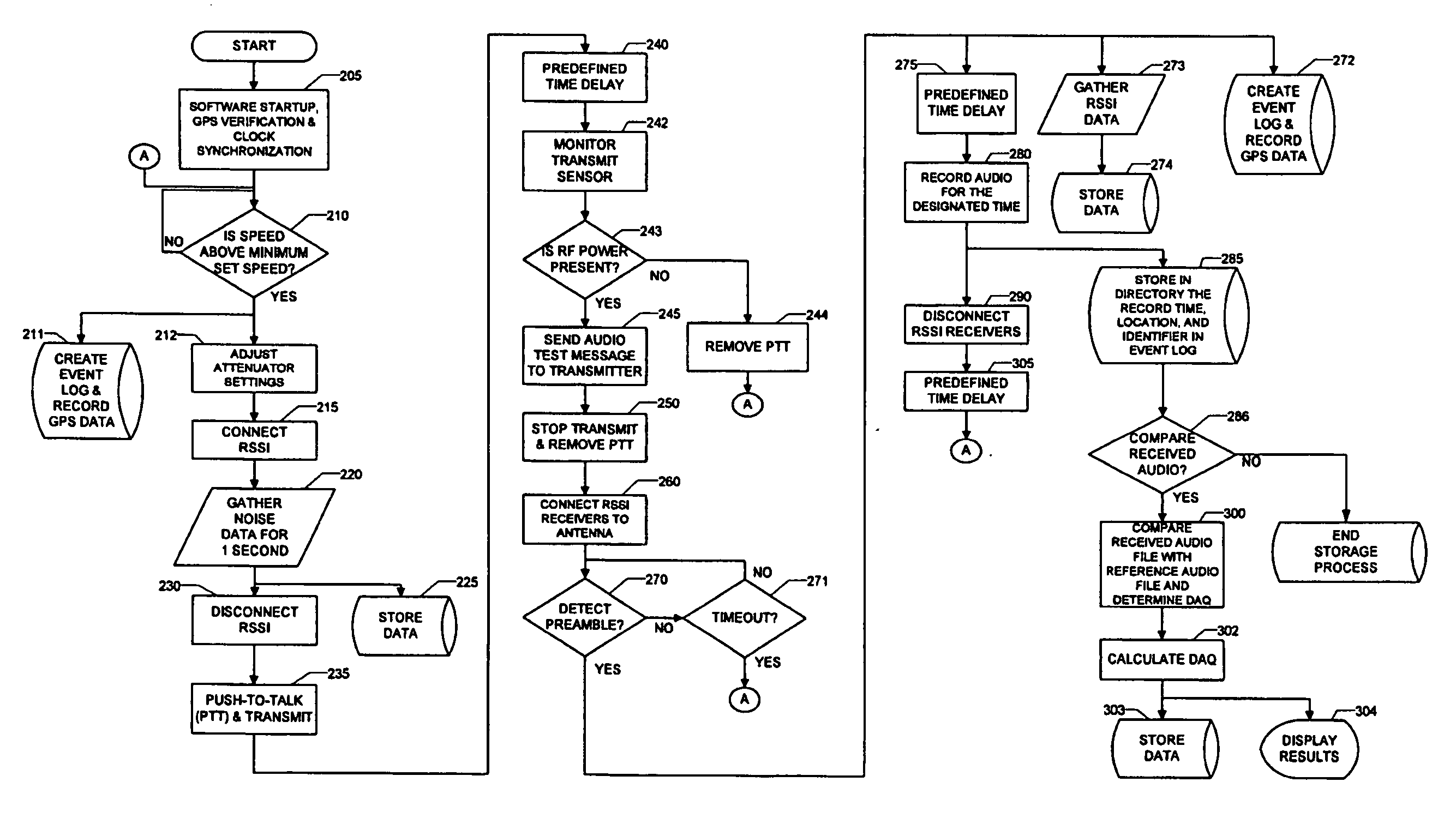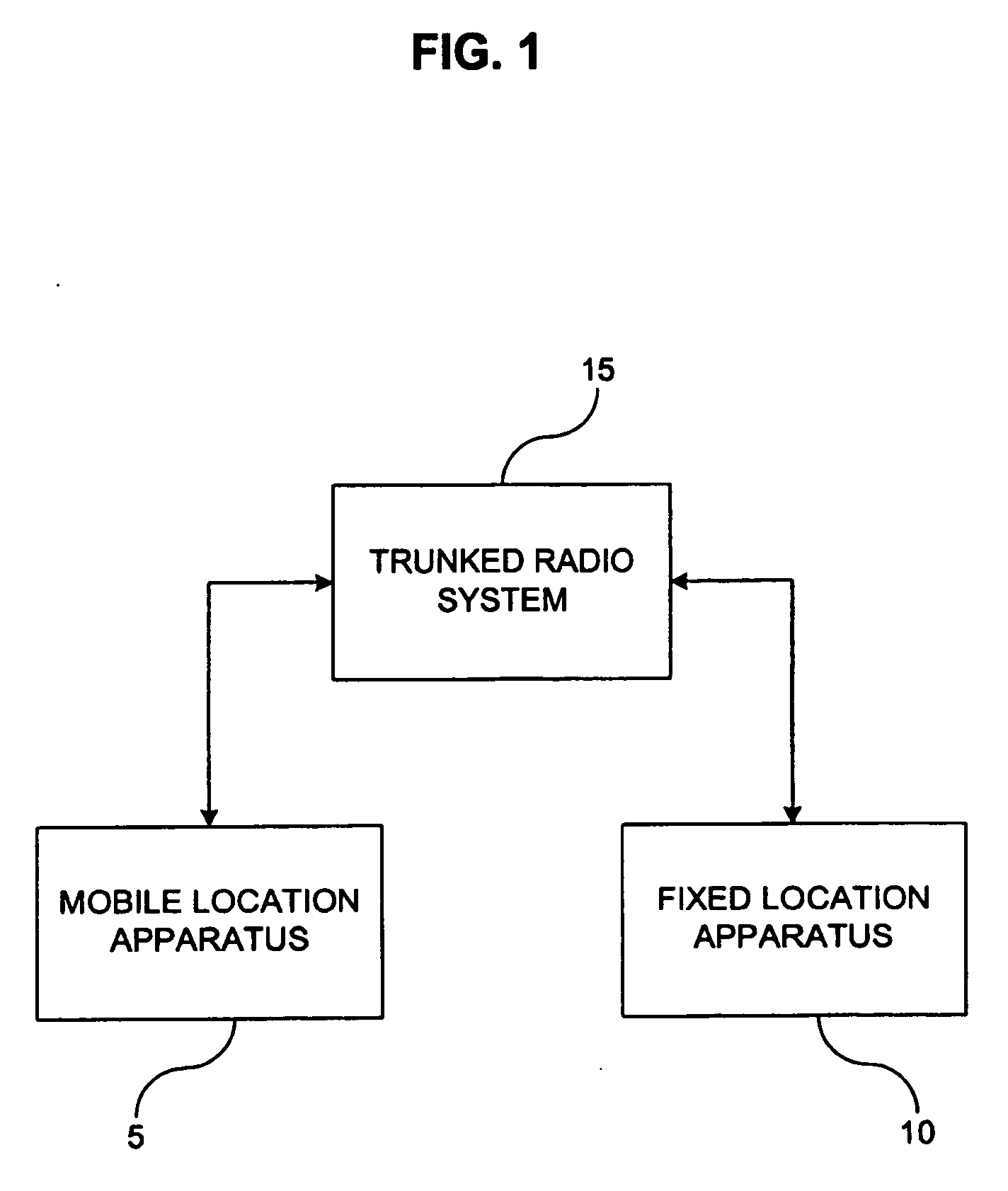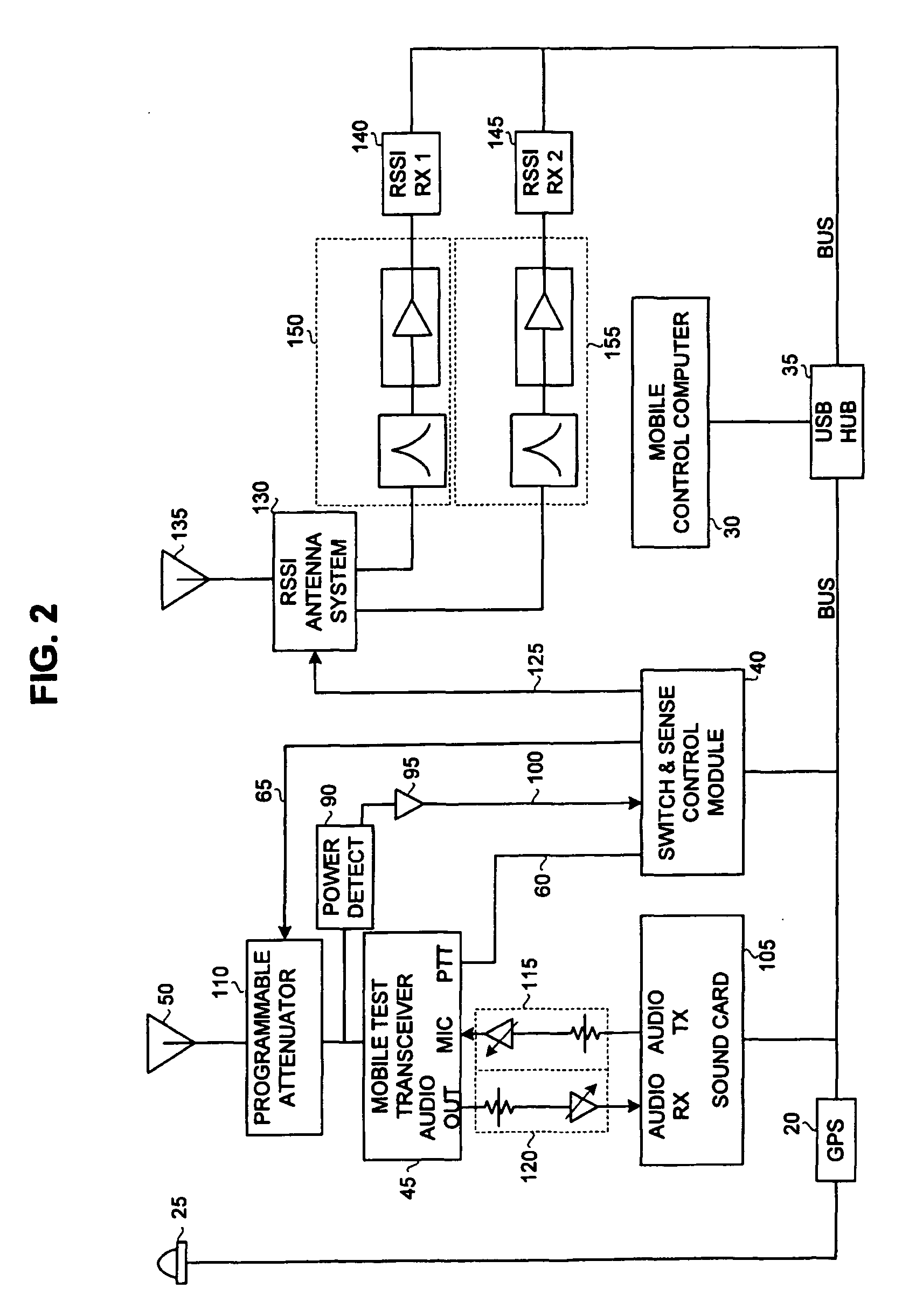Method and System for Evaluating Radio Coverage
a radio coverage and measurement system technology, applied in the field of two-way mobile radio coverage measurement and testing system, can solve the problems of misinterpretation of data resulting from coverage acceptance testing, plague the land mobile radio industry, its markets, and its end-users, and is less accurate when other forms of modulation
- Summary
- Abstract
- Description
- Claims
- Application Information
AI Technical Summary
Problems solved by technology
Method used
Image
Examples
Embodiment Construction
[0029] For a more detailed understanding of the invention, reference is first made to FIG. 1 of the drawings in which the invention is presented in block diagram form as including a Mobile Apparatus 5 at a mobile location and a Fixed Apparatus 10 at a stationary location. In order to establish and evaluate radio coverage provided by two-way Radio System 15, both apparati 5 and 10 must be able to communicate with Radio System 15. Radio System 15 may be either a single repeater site or multiple repeater sites that are part of a wide-area (e.g., simulcast) trunked or conventional radio system. In the following disclosure, use of a trunked configuration for Radio System 15 is assumed. The disclosure applies similarly to other configurations, with minor adaptations. As explained below, in a trunked configuration, the radio has to interact with a site controller via a control channel, and recording of a call must await assignment of a working channel for the call. In a conventional, non-t...
PUM
 Login to View More
Login to View More Abstract
Description
Claims
Application Information
 Login to View More
Login to View More - R&D
- Intellectual Property
- Life Sciences
- Materials
- Tech Scout
- Unparalleled Data Quality
- Higher Quality Content
- 60% Fewer Hallucinations
Browse by: Latest US Patents, China's latest patents, Technical Efficacy Thesaurus, Application Domain, Technology Topic, Popular Technical Reports.
© 2025 PatSnap. All rights reserved.Legal|Privacy policy|Modern Slavery Act Transparency Statement|Sitemap|About US| Contact US: help@patsnap.com



